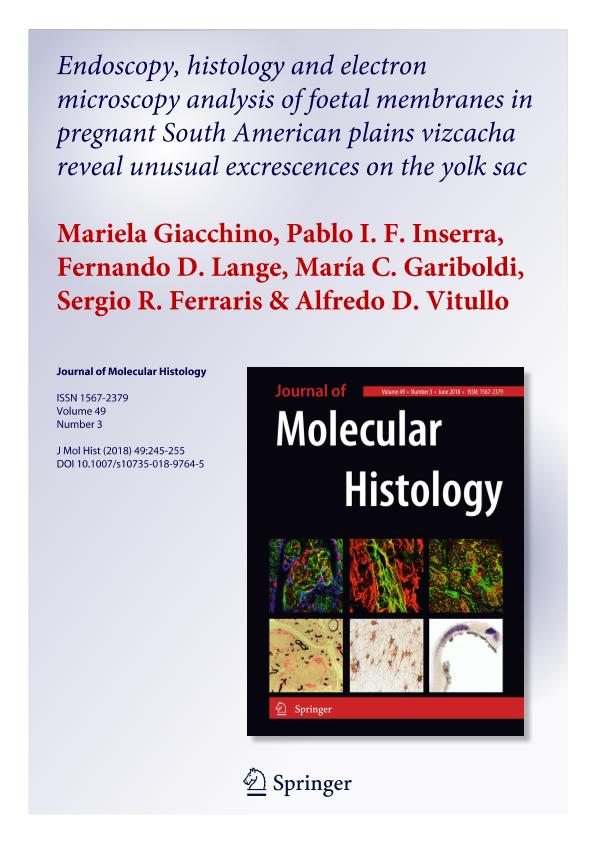Artículo
Endoscopy, histology and electron microscopy analysis of foetal membranes in pregnant South American plains vizcacha reveal unusual excrescences on the yolk sac
Giacchino, Mariela ; Inserra, Pablo Ignacio Felipe
; Inserra, Pablo Ignacio Felipe ; Lange, Fernando D.; Gariboldi, María Constanza
; Lange, Fernando D.; Gariboldi, María Constanza ; Ferraris, Sergio Raúl; Vitullo, Alfredo Daniel
; Ferraris, Sergio Raúl; Vitullo, Alfredo Daniel
 ; Inserra, Pablo Ignacio Felipe
; Inserra, Pablo Ignacio Felipe ; Lange, Fernando D.; Gariboldi, María Constanza
; Lange, Fernando D.; Gariboldi, María Constanza ; Ferraris, Sergio Raúl; Vitullo, Alfredo Daniel
; Ferraris, Sergio Raúl; Vitullo, Alfredo Daniel
Fecha de publicación:
06/2018
Editorial:
Springer
Revista:
Journal of Molecular Histology
ISSN:
1567-2379
Idioma:
Inglés
Tipo de recurso:
Artículo publicado
Clasificación temática:
Resumen
The South American hystricognathe Lagostomus maximus is a fossorial rodent whose females show unique reproductive characteristics. They have a 155-day long gestation, show massive polyovulation and a selective process of embryonic resorption in the first half of gestation. In order to explore and perform an in-situ characterization of the reproductive tract, we visualized internal structures through ultrasonography and video-endoscopy in pregnant and non-pregnant females. We describe the finding of protruding structures that lie on the yolk sac and their histological and ultrastructural characterization. The placenta was covered with whitish, small pearl-shaped structures. These structures were also seen on the extra-embryonic space, being the amnion and the umbilical cord free of them. Pearl-shaped structures were composed with loose connective tissue, lacked blood vessels, and showed collagen fibers organized in a spiral form. They were anchored by pedicles to the villous surface of the extraembryonic membrane. We discuss the biological and evolutionary meaning of the pearl-shaped structures that relate L. maximus to the African origin of the South American hystricognathe fauna.
Palabras clave:
ENDOSCOPY
,
MESODERM EXCRESCENCES
,
PLACENTA
,
PREGNANCY
,
ULTRASOUND
,
VIZCACHA
Archivos asociados
Licencia
Identificadores
Colecciones
Articulos(SEDE CENTRAL)
Articulos de SEDE CENTRAL
Articulos de SEDE CENTRAL
Citación
Giacchino, Mariela; Inserra, Pablo Ignacio Felipe; Lange, Fernando D.; Gariboldi, María Constanza; Ferraris, Sergio Raúl; et al.; Endoscopy, histology and electron microscopy analysis of foetal membranes in pregnant South American plains vizcacha reveal unusual excrescences on the yolk sac; Springer; Journal of Molecular Histology; 49; 3; 6-2018; 245-255
Compartir
Altmétricas



